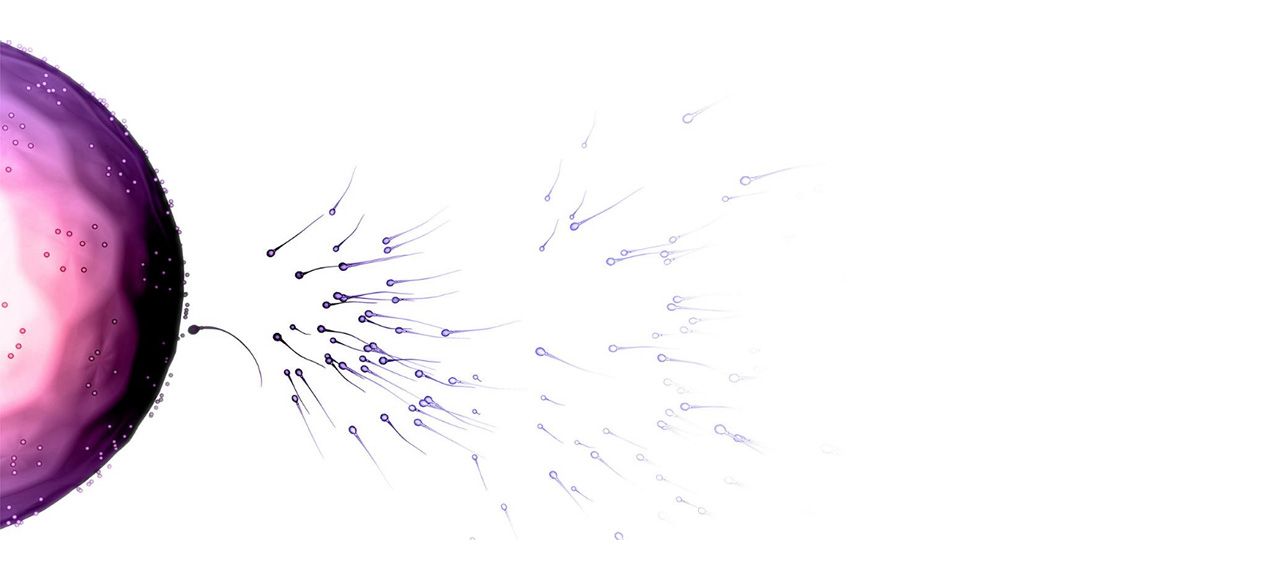Short-term FSH treatment and sperm maturation: a prospective study in idiopathic infertile men.
Librarian's Comment : RESEARCH QUESTIONS Treatment of men with primary infertility and idiopathic oligo- and/or astheno- and/or teratozoospermia with highly purified FSH (hpFSH): 1. What is the effect after short-term (1month) and standard (3 month) hpFSH treatment on conventional (Total Sperm Number & Total Motile Sperm Count) and functional (Sperm-Hyaluronan Binding Assay; HBA) semen parameters? 2. Is there a predictive value of FSHb and FSHR genes polymorphisms on patient responsiveness? WHAT IS ALREADY KNOWN • Recent meta-analyses suggest that therapy with hpFSH (for at least 3 months) in idiopathic infertile men with normal FSH levels, improves semen parameters and pregnancy rate both spontaneously or after ART • Response to treatment is approximately 50% and it is unpredictable so far • No studies have assessed the effect of hpFSH treatment on sperm maturation (spermiogenesis) • HBA can be used as a surrogate marker for sperm maturation DESIGN • a prospective clinical trial (not controlled – not randomized) of hpFSH 75 IU CAD for 3 months • 40 oligo- and/or astheno- and/or teratozoospermic men with primary infertility • A 4–6 months ‘wash-out’ period to counterbalance the lack of placebo BRIEF ANSWER 1. A statistically significant improvement of HBA(+) spermatozoa from basal was observed both after 1 month and after 3 months. The same response was observed for both total sperm number and total motile sperm count after 3 months. 2. The responsiveness to treatment was independent from FSHR/FSHb polymorphisms. COMMENTS • Recent works elevate the proportion of idiopathic male infertility up to 75%. Evidence based treatment of this population has not been employed yet. • A short-term FSH regimen would reduce substantially costs and psychological burden • This is more a proof of concept study. Hard end-points (e.g. pregnancy rates) needed.Published in : Andrology
Authors : Casamonti E, Vinci S, Serra E, Fino MG, Brilli S, Lotti F, Maggi M, Coccia ME, Forti G, Krausz C
Abstract : The standard FSH treatment is based on a 3 months period, after which both quantitative/qualitative improvement of sperm parameters and increased pregnancy rate were reported. In this prospective clinical trial, for the first time, we studied (i) Sperm hyaluronic acid binding capacity after highly purified FSH (hpFSH) treatment; (ii) the effect after short-term and standard treatment on this functional parameter. As secondary objective, we analyzed three SNPs on FSHß and FSHR genes to define their potential predictive value for responsiveness. From a total of 210 consecutive patients, 40 oligo- and/or astheno- and/or teratozoospermic patients fulfilled the inclusion criteria. Treatment consisted in hpFSH 75 IU/L every other day for 3 months. To avoid potential biases derived from the lack of placebo, we analyzed each patient after 4-6 months of 'wash-out' period. After FSH treatment, we observed a statistically significant (p < 0.001) improvement of the percentage of hyaluronic acid bound spermatozoa from basal to T1 (after 1 month) and to T3 (after 3 months). Importantly, these values returned to near-baseline value after the wash-out. The same results were detected for total motile sperm count after 3 months with return to baseline after wash-out. Forty-two percent of patients responded to the therapy with increasing hyaluronic acid binding capacity above the double of the Intraindividual Variation (IV) while 24% of patients reached above the normal Sperm-Hyaluronan Binding Assay (HBA) value. Further increase in 'responders' was observed at T3. The responsiveness to treatment resulted independent from FSHR/FSHß polymorphisms. The significant positive effect on sperm maturity after 1 month opens novel therapeutic perspectives. In view of both the high cost and the relative invasiveness of treatment, the short protocol (1 month) could represent a viable FSH treatment option prior Assisted Reproductive Techniques since FSH, by acting on sperm maturation, increases the proportion of functionally competent cells.









